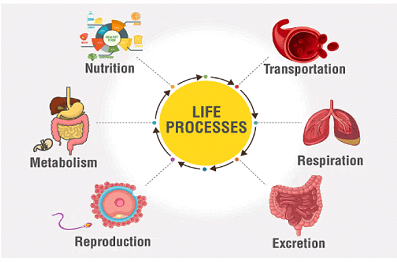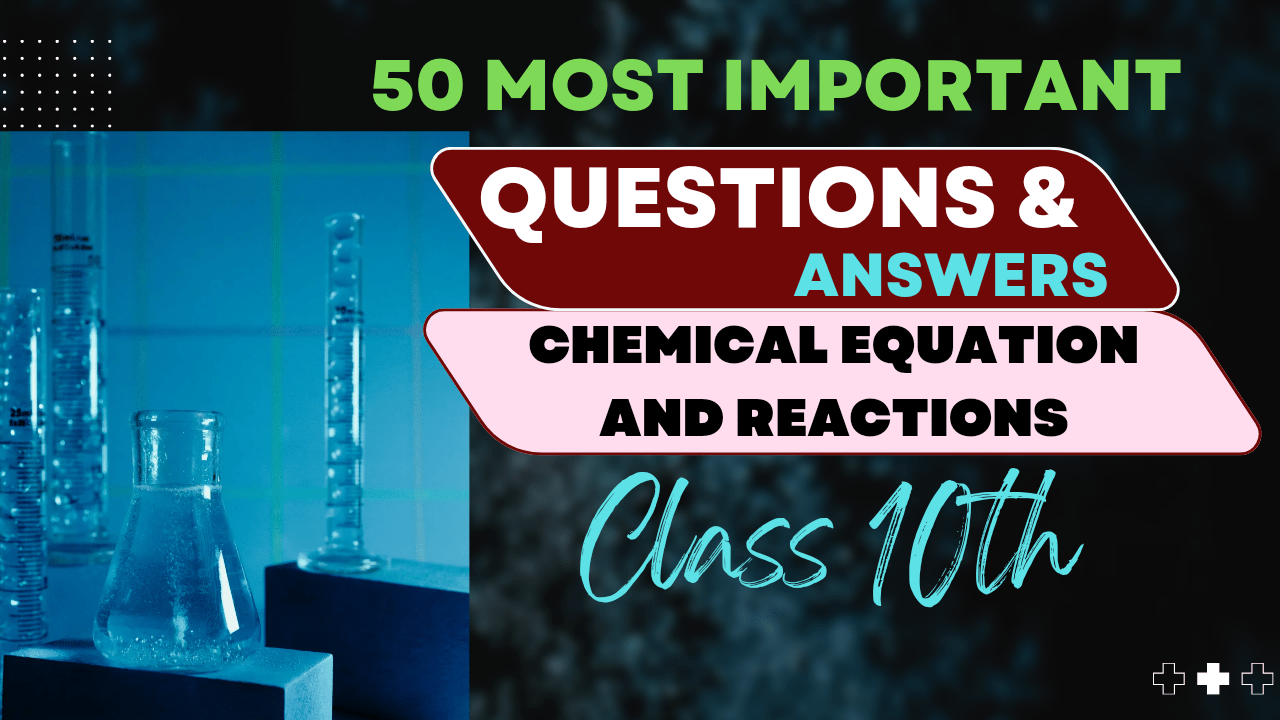Chemical Equations
Understanding the language of chemistry
What is a Chemical Equation?
A chemical equation is a symbolic representation of a chemical reaction where the reactants (starting substances) and products (resulting substances) are expressed using chemical formulas. Chemical equations serve as the shorthand notation chemists use to describe chemical transformations.
Important to Remember:
Chemical equations are the foundation of understanding chemical reactions. Mastering them is essential for solving problems in chemistry examinations.
Basic Structure of a Chemical Equation
A chemical equation follows this general pattern:
The arrow (→) represents the direction of the reaction, indicating that the reactants are converted into the products. The reactants are written on the left side of the arrow, and the products are written on the right side.
Example:
When hydrogen gas (H2) combines with oxygen gas (O2) to form water (H2O), the chemical equation is:
Note: This equation is not balanced yet. We’ll learn about balancing equations in a subsequent post.
Symbols Used in Chemical Equations
Chemical equations use various symbols to convey specific information:
| Symbol | Meaning | Example |
|---|---|---|
| → | Reaction proceeds in forward direction | A + B → C + D |
| ⇌ | Reversible reaction (proceeds in both directions) | A + B ⇌ C + D |
| ↑ | Gas is produced | CaCO3 → CaO + CO2↑ |
| ↓ | Precipitate (solid) is formed | AgNO3 + NaCl → AgCl↓ + NaNO3 |
| Δ | Heat is required | CaCO3 Δ→ CaO + CO2 |
| (s) | Solid state | C(s) + O2(g) → CO2(g) |
| (l) | Liquid state | H2O(l) → H2O(g) |
| (g) | Gaseous state | H2(g) + O2(g) → H2O(l) |
| (aq) | Aqueous solution (dissolved in water) | NaCl(s) → Na+(aq) + Cl–(aq) |
Exam Tip:
Knowing these symbols is crucial for interpreting chemical equations in exams. Pay special attention to state symbols as they are often required in higher-level chemistry examinations.
Types of Chemical Equations
1. Molecular Equations
Molecular equations show the complete formula of all reactants and products without indicating ionic species.
Example:
2. Ionic Equations
Ionic equations show the ions involved in the reaction, particularly for solutions of ionic compounds.
Example:
3. Net Ionic Equations
Net ionic equations show only the ions that actually participate in the reaction, excluding spectator ions that remain unchanged.
Example:
Note: Na+ and NO3– are spectator ions and do not participate in the reaction.
Information Conveyed by Chemical Equations
A properly written chemical equation provides the following information:
- The reactants and products involved – shown by their chemical formulas
- The relative quantities – indicated by the coefficients in a balanced equation
- The physical states – shown by state symbols (s, l, g, aq)
- Reaction conditions – like temperature, pressure, catalysts, etc.
- The energy change – sometimes indicated for endothermic or exothermic reactions
Comprehensive Example:
This equation tells us that:
- Two molecules of hydrogen gas react with one molecule of oxygen gas
- The reaction produces two molecules of liquid water
- Heat is released (the reaction is exothermic)
Common Chemical Equations for Examination
Memorizing these frequently tested chemical equations will help in examinations:
| Reaction Type | Chemical Equation | Notes |
|---|---|---|
| Combustion of methane | CH4 + 2O2 → CO2 + 2H2O | Complete combustion of natural gas |
| Photosynthesis | 6CO2 + 6H2O → C6H12O6 + 6O2 | Conversion of light energy to chemical energy in plants |
| Neutralization | HCl + NaOH → NaCl + H2O | Acid-base reaction forming salt and water |
| Rusting of iron | 4Fe + 3O2 + 2H2O → 2Fe2O3·H2O | Oxidation of iron in presence of oxygen and moisture |
| Respiration | C6H12O6 + 6O2 → 6CO2 + 6H2O + energy | Breakdown of glucose to release energy |
Exam Practice:
Practice writing these equations from memory. In exams, you may be asked to complete a partially written equation or identify the type of reaction based on the equation provided.
Limitations of Chemical Equations
While chemical equations are powerful tools, they have some limitations:
- They do not show the reaction mechanism (the step-by-step process)
- They do not indicate reaction rates (how fast the reaction occurs)
- They do not show intermediate compounds formed during the reaction
- They do not indicate the exact quantities in grams or moles unless explicitly calculated
- They do not show the energy profile of the reaction
Important Note:
In advanced chemistry courses, these limitations are addressed using reaction mechanisms, kinetic studies, and thermodynamic calculations.
Key Takeaways
- Chemical equations are symbolic representations of chemical reactions showing reactants and products
- Various symbols (→, ⇌, ↑, ↓, Δ) provide additional information about the reaction
- State symbols (s, l, g, aq) indicate the physical state of each substance
- Types of equations include molecular, ionic, and net ionic equations
- Chemical equations must be balanced to satisfy the law of conservation of mass
- Chemical equations are fundamental to understanding and predicting chemical behavior
Practice Questions for Self-Assessment
1. What does the arrow (→) represent in a chemical equation?
Answer: The arrow indicates the direction of the reaction, showing that reactants are converted into products.
2. What information is conveyed by the symbols (s), (l), (g), and (aq) in chemical equations?
Answer: These symbols indicate the physical states of substances: solid, liquid, gas, and aqueous solution, respectively.
3. Identify the reactants and products in the following equation: 2H2O2 → 2H2O + O2
Answer: Reactant: hydrogen peroxide (H2O2); Products: water (H2O) and oxygen gas (O2).
4. What is the difference between a molecular equation and a net ionic equation?
Answer: A molecular equation shows all substances in their complete molecular form, while a net ionic equation shows only the ions that actually participate in the reaction, excluding spectator ions.
5. What information does a chemical equation NOT provide?
Answer: Chemical equations do not show the reaction mechanism, reaction rates, intermediate compounds, or the energy profile of the reaction.



